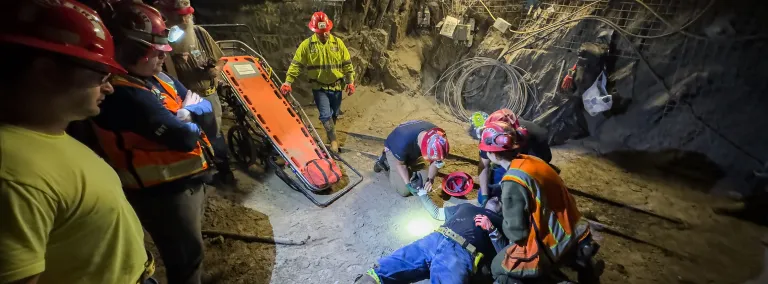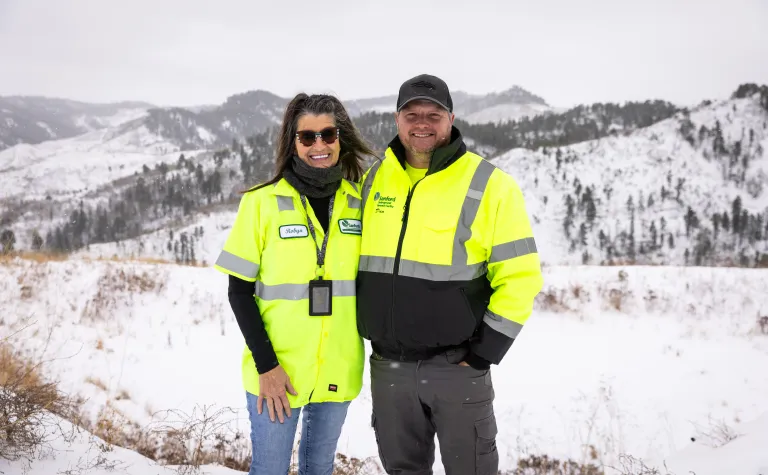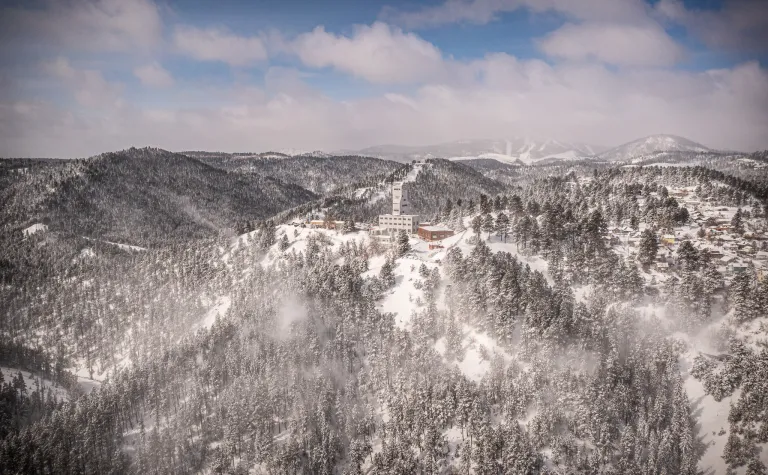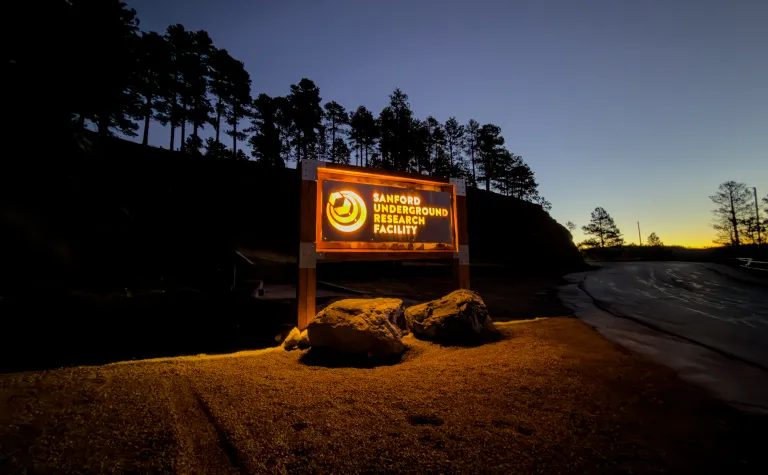SURF ERTs train as EMTs in continuous improvement efforts
SURF’s Emergency Response Team (ERT) are the first responders for all incidents that might occur above or below ground at the facility. The team now includes a majority of individuals who are trained as Emergency Medical Technicians (EMT).
The Sanford Underground Research Facility (SURF) boasts an excellent safety record. During the excavation for the colossal caverns of the Deep Underground Neutrino Experiment, the facility passed one million hours of labor without any time lost at work due to injury.
Part of SURF’s strong safety culture includes a well-trained emergency response team with the skillsets to answer any call—anywhere at the facility—above or below ground. This includes the 370-miles of passageways and deep vertical shafts that make up America’s Underground Lab.
Over the past year, SURF’s Emergency Response Team (ERT) has added significantly to their skillsets by increasing the number of trained Emergency Medical Technicians (EMTs) on site. Barry VanSickle, supervisor for SURF’s ERT, says training to become a certified EMT is not a small undertaking—it includes about 165 hours of instruction, classroom learning, and practical skills exercises and testing.
VanSickle says at first the plan was to ask emergency response team members to volunteer for the EMT training, and many did.
“And then the management at SURF came to the conclusion that they wanted to support the class, and they decided to pay the people to actually take it—which is rather unheard of,” VanSickle said. “Most of the time when you take an EMT class, whether it's for the ambulance service or as any first responder, you don't get paid to take it. We're very appreciative of SURF’s leadership and the Environment, Safety, Health Advisory Committee at SURF that supported this move.”
You just can't call an ambulance and have them show up and go underground and know where they're going or how to do the job safely. So, we in the ERT fill a niche here.
SURF’s ERT now has a majority of its 35 members as certified EMTs or higher medical training. All of SURF’s full time ERT members are trained EMT’s—the additional training also included part-time members. Van Sickle says SURF sees a return on this investment in the capabilities of the entire team. He says all team members take part in ongoing education each month that includes medical training along with exercises that simulate all aspects of mine rescue, and this includes everything from a mock medical evacuation from any of the remote corners of the sprawling facility to firefighting underground and rope rescue inside a shaft.
“We are a very unique situation,” VanSickle said. “You just can't call an ambulance and have them show up and go underground and know where they're going or how to do the job safely. Same with the fire department, they don’t have a need to train for firefighting or rescue underground in their everyday work. It's such a unique place and a different environment for outside responders—so we in the ERT fill a niche here.”
The niche that SURF’s own emergency response team fills includes a wide range of different specialties—from those trained as firefighters, rope technicians, and EMT’s, to those with backgrounds as infrastructure technicians, scientists, and engineers. VanSickle points out that having a large team, comprised of both full-time and part-time members, is critical to meet the need.
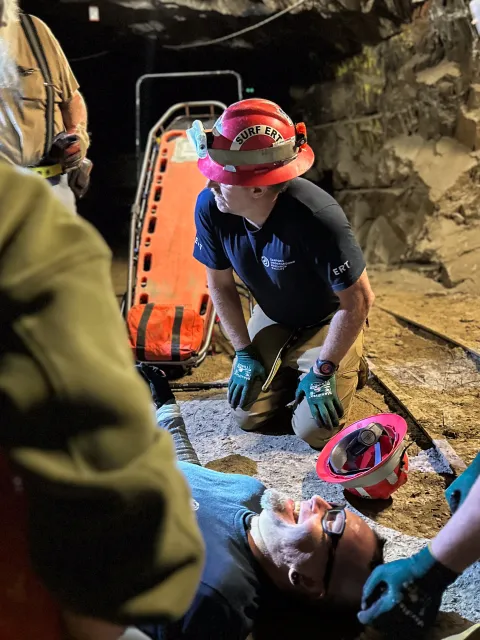
Members of SURF’s Emergency Response Team train during a mock rescue mission on the 800 Level of SURF.
Photo by Stephen Kenny
“We have 370 miles and multiple levels underground at SURF. If I need to send search and rescue teams to a few different levels at the same time, there's no way we could do this with just a couple full-time staff members. So, we recognize that we need well-trained volunteers with a wide spectrum of skillsets who are part of the team,” VanSickle said.
One of those volunteers is Yates Shaft foreman Ashana Baumberger. “This EMT class was a nice opportunity that SURF offered us,” Baumberger said. “There is peace of mind in knowing I am better prepared when there are people counting on me to come to help them out.”
Additionally, VanSickle points out that SURF’s ERT members are also integrated into their own communities around the Black Hills. Many of them use their training at SURF to volunteer in fire departments and in other emergency management agencies in their own communities. On top of this, he notes that area first responders frequently come to SURF to take part in professional development training. This includes the local fire departments, some of whom recently completed hazmat training at the facility alongside SURF ERT, regional collegiate-level Mine Rescue Teams, and even the South Dakota National Guard.
“We're still looking to the future and always upgrading our game,” VanSickle said. “We're always striving to keep learning, to keep training, to continually be better at what we do. And everything you learn is something that you can pass on to the rest of the team.”
In June of each year, the United States recognizes National Safety Month—the month is a reminder that every individual plays a role in building and maintaining a strong safety culture. On top of this, SURF’s well-trained Emergency Response Team, provides solid peace of mind, for all those who visit or work at America’s Underground Lab.
